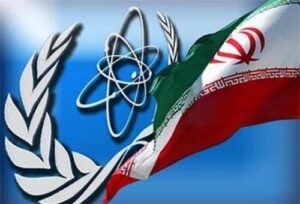There is a growing optimism around reviving the Joint Comprehensive Plan of Action (JCPOA) in the five rounds of talks held in Vienna so far. However, Iran has insisted that it will restrict the International Atomic Energy Agency’s (IAEA) monitoring access to the country’s nuclear sites till the US doesn’t lift its economic sanctions. The US on the other hand has made Iran’s resumption of compliance to the JCPOA a necessary condition for lifting sanctions.
As the US and Iran find themselves in a Catch-22 situation, Iran moves further away from its commitments under the Nuclear Non-proliferation Treaty (NPT)—such as compliance with the Additional Protocol (AP). This could potentially trigger an Iranian withdrawal from the NPT. This article will analyse the pros and cons of withdrawing from the NPT for Iran.
Iran and the NPT: An Overview
Iran has a chequered history with the NPT. It was one of the first NPT signatories in 1968, and as a Non-nuclear Weapon State (NWS), is mandated by the treaty to not develop nuclear weapon capabilities and subject its nuclear facilities to international monitoring by the IAEA. Iran signed the NPT’s safeguard agreement in 1974, and adopted the AP in 1997. However Iran has repeatedly been involved in clandestine proliferation activities. In the following years, the IAEA reported Iran’s growing non-compliance in terms of its general lack of transparency and “involvement with sensitive parts of the nuclear fuel cycle.”
Analysts have compared Iran’s case to that of North Korea which, after violating its commitments to the NPT, withdrew from the treaty in 2003. Iran’s case is however not as straightforward. North Korea’s nuclear weapons capability was restricted only by the NPT. The non-proliferation ecosystem in Iran’s case encompasses an extensive set of institutions: the NPT, United Nations Security Council Resolutions, and the JCPOA. Hence, if Iran were to quit the NPT, it would not be for the sole purpose of advancing its nuclear weapons. Instead, Tehran will seek to use the move as a bargaining chip and coerce the US into lifting the current unilateral primary and secondary sanctions on Iran.
Pros of Withdrawing from the NPT
There are two widely discussed possible advantages of a threat as well actual withdrawal from the NPT. The first would be to coax an agreement out of the European parties, and more importantly, the US, as soon as possible, to restore the JCPOA, while also pushing for the lifting of US sanctions. Iran has made such threats before—in 2012, 2018, and recently, in 2020. However, these were largely perceived as empty threats. There is no reason to believe that it would be any different this time around.
The second and more substantial advantage could be to remove all its nuclear facilities from international oversight to further its nuclear weapons programme. However, the NPT hasn’t been a major deterrent in Iran’s quest for nuclear weapons anyway, as argued earlier. It launched a clandestine programme of uranium fuel enrichment and reprocessing at Natanz, undertook construction of a heavy water production plant at Arak, started uranium conversion activities at Isfahan, resumed the manufacturing, assembling, and testing of centrifuges, and so on. In fact, after Iran officially refused to comply with the JCPOA in May 2019, it has been able to increase its total stockpile of enriched uranium to 3,241 kg, which is about “16 times higher than the permitted stockpile under the JCPOA.” It has enriched its uranium up to 60 per cent purity.
This is primarily because the NPT safeguards system is not fool-proof—a state can master different stages of the nuclear fuel cycle without legally defying the NPT. The AP, which gives the IAEA short-notice access to declared and undeclared nuclear facilities and multiple entry-exit visas for inspectors, was signed by Iran in 2003 but never ratified. The AP is voluntary and adherence can be rescinded by a state party at any point. Iran announced its suspension of the AP in February 2021 and replaced it with limited IAEA access until a deal was reached.
Cons of Withdrawing from the NPT
While the NPT may not be very effective in arresting nuclear proliferation, it does enhance the status and legitimacy of member states in the global nuclear order. The EU3’s swift efforts in trying to restore the JCPOA and diplomatically isolating the US to ‘snapback’ the arms embargo in the UNSC may be rooted in an effort to stymie Iran’s nuclear programme, but is also influenced by the goodwill generated by Iran’s NPT membership. NPT membership provides member states with de-jure acceptance in the global nuclear order, which Iran at this point cannot risk losing. Leaving the NPT will concretise its ‘pariah’ status and dismantle hope for a future agreement.
Withdrawing from the NPT would also mean an immediate snapback of the three sets of economic and military sanctions: the seven UNSCRs (which were suspended under the JCPOA), EU sanctions, plus the US sanctions that are already in place.
Finally, after withdrawal, Iran will not be able to access any civil nuclear aid from other NPT states. For instance, a withdrawal could severely hamper the construction of its two Russian-designed Bushehr phase 2 nuclear reactors with a combined capacity of 2100 MWe that were supposed to become operational in 2024.
While Iran doesn’t have much to gain from its withdrawal from the NPT, it certainly has a lot to lose. Tehran of course also realises these pitfalls, and will therefore adopt a measured approach in using it as a bargaining stick, but not delivering on the threat of withdrawal.
Shivani Singh is a PhD research scholar at Aberystwyth University, UK.


